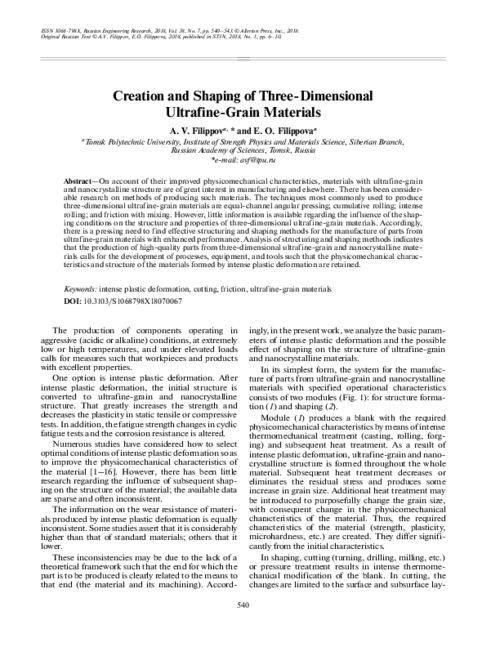Creation and Shaping of Three-Dimensional Ultrafine-Grain Materials
On account of their improved physicomechanical characteristics, materials with ultra fine-grain and nanocrystalline structure are of great interest in manufacturing and elsewhere. There has been considerable research on methods of producing such materials. The techniques most commonly used to produce three-dimensional ultrafine-grain materials are equal-channel angular pressing; cumulative rolling; intense rolling; and friction with mixing. However, little information is available regarding the influence of the shaping conditions on the structure and properties of three-dimensional ultrafine-grain materials. Accordingly, there is a pressing need to find effective structuring and shaping methods for the manufacture of parts from ultrafine-grain materials with enhanced performance. Analysis of structuring and shaping methods indicates that the production of high-quality parts from three-dimensional ultrafine-grain and nanocrystalline materials calls for the development of processes, equipment, and tools such that the physicomechanical characteristics and structure of the materials formed by intense plastic deformation are retained




